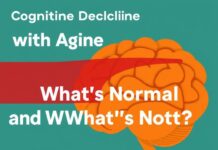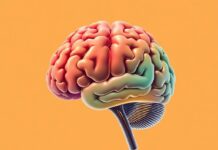Neuroplasticity is one of those terms that sounds clinical and distant, but at its heart it’s deeply personal: it’s the brain’s ability to adapt, rewire, and become new through experience. Whether you want to pick up a language, recover from an injury, drop a stubborn habit, or simply become better at focusing, neuroplasticity is the mechanism that makes change possible. In this article I’ll walk you through what neuroplasticity actually is, how it works, and—most importantly—practical, science-backed ways to train your brain so you can change in meaningful, lasting ways.
You don’t need a lab coat or a background in neuroscience to use neuroplasticity to your advantage. The brain is constantly sculpting itself. With the right intentions, consistent practice, and a few lifestyle adjustments, you can steer that sculpting process. Over the next sections I’ll explain the principles that govern brain change, provide concrete exercises and a 12-week program you can try, and bust common myths that can slow down your progress. This is an approachable, conversational guide to making your brain work for you.
Содержание
What Is Neuroplasticity?
Neuroplasticity refers to the brain’s capacity to reorganize its structure, function, and connections in response to experience, learning, or injury. For decades scientists believed the adult brain was largely fixed after a certain age, but research over the last 40 years has shown that neurons continue to form new connections, strengthen existing ones, and even change their communication patterns throughout life. This ability underpins everything from the tiny motor adjustments when you learn to ride a bike to the major rewiring that helps someone regain function after a stroke.
Think of your brain as a dynamic city of roads. Some roads are highways—well-traveled neural pathways—while others are tiny alleyways barely used. As you practice a skill, you pave more lanes, add signs, and make routes faster and more efficient. When you stop using a pathway, it may fall into disrepair. That analogy helps explain why repeated practice matters: the brain strengthens the routes you use and prunes those you don’t.
There are different types of neuroplasticity. Synaptic plasticity changes the strength and efficiency of connections between neurons (synapses). Structural plasticity involves physical changes—new dendrites, new axons, or even new neurons in limited regions (neurogenesis, notably in the hippocampus). Functional plasticity is when brain regions take on new roles—common after injury when one area compensates for another. All of these work together to support learning and adaptation.
How the Brain Changes: Synapses, Neurons, and Networks
At the microscopic level, learning often involves long-term potentiation (LTP), a process that increases the strength of synapses through repeated activation. When two neurons frequently fire together, their synaptic connection becomes more efficient—often summarized as “neurons that fire together wire together.” This is the cellular basis for forming memories and skills.
But it’s not just about strengthening. The brain also prunes synapses—removing unused connections to improve efficiency. During childhood, pruning is vigorous and helps refine skills; in adulthood pruning continues but more slowly. Myelination—adding insulation around axons—boosts speed of communication between regions. This process continues into adulthood for certain pathways, especially those involved in practiced behaviors.
Beyond the cells, the brain operates in networks. Learning changes how networks communicate: for example, when you first learn a new motor skill, many brain areas are involved; with practice, activity becomes more localized and efficient. That network-level reorganization is why feeling clumsy at first is normal—and why practice yields fluency.
Why Neuroplasticity Matters in Everyday Life
Neuroplasticity explains a lot of human change: how children acquire language, how adults learn new careers, how habits form, and how recovery after brain injury is possible. If you want to stop an anxious reaction to a trigger, the brain must unlearn an automatic path and build a new route. If you want to be physically stronger, repeated exercise strengthens neural circuits that coordinate muscles. If you want to become more creative, exposing your brain to new experiences can create novel connections.
It also gives responsibility—and hope. Because your brain can change, intentional practice can lead to real improvement. Conversely, passive habits and chronic stress can rewire your brain in ways that aren’t helpful. Understanding this gives you powerful leverage: small consistent actions produce cumulative changes over time.
Principles of Training Your Brain
There are core principles that reliably produce plastic changes. Learning these helps you design practice that actually rewires the brain rather than wasting time.
- Attention and intention: Focused attention directs which circuits are engaged and therefore which connections are strengthened.
- Repetition with variability: Repeat a skill, but introduce slight variations to encourage robust learning.
- Desirable difficulty: Challenge the brain enough that it must adapt, but not so much that it shuts down.
- Emotional engagement: Emotions and rewards boost consolidation and motivation.
- Sleep and rest: Sleep consolidates learning and removes metabolic waste; rest helps convert practice into lasting change.
- Nutrition and exercise: Metabolic health supports the cellular machinery of plasticity.
These are simple in theory but easy to forget in practice. Below I’ll unpack each and give ways to implement them.
Attention and Intention
The brain prioritizes what you pay attention to. Focus is like a spotlight that makes certain neural circuits more likely to strengthen. Multi-tasking or passive exposure rarely leads to durable learning. If you want to learn piano, five focused 20-minute sessions beat one unfocused two-hour session because focused attention produces high-quality activation.
Set clear intentions before practice: know what you’ll do, why it matters, and what success looks like. Short mental warm-ups—like a brief visualization of a task—prime attention and make the subsequent practice more effective. Small rituals (sitting in the same chair, a specific playlist) can help create a focused context that signals your brain to enter “learning mode.”
Repetition and Spaced Practice
Repetition is necessary but not sufficient. What kind of repetition matters is critical. Spaced practice—distributing sessions over time—produces much better retention than massed practice. The spacing effect is robust across domains: language vocabulary, motor skills, and conceptual learning.
Make a practice schedule that revisits the same material at increasing intervals. Use active recall rather than passive review. For skills, break them into subcomponents and repeat small parts with feedback. The goal is to produce repeated activation of the same circuits at moments when they’re beginning to weaken—this strengthens long-term retention.
Challenge and Difficulty (Desirable Difficulty)
Tasks should be hard enough to require effort. When the brain works to solve a problem it recruits plastic mechanisms. If something is too easy, you won’t induce meaningful change; if it’s impossibly hard, you’ll get discouraged and not persist. This concept—desirable difficulty—guides effective practice.
Adjust difficulty by stretching slightly beyond your comfort zone. Add time pressure, reduce clues, or introduce interference. Track your performance so you can make small, systematic increases in challenge as you improve.
Novelty and Variability
Novel experiences prompt the brain to form new connections because they activate neuromodulatory systems tied to learning, like dopamine. Variable practice—changing conditions, contexts, or the surface features of a task—helps the brain learn the underlying rule rather than memorizing a single response. That leads to better transfer when you face new situations.
If you’re learning tennis, practice on different courts and against different opponents. If you’re learning a language, vary your conversation partners and topics. Novelty doesn’t mean chaos; it means structured variation that forces adaptation.
Emotional Engagement and Reward
Emotion colors memory. Positive motivation, social connection, and meaningful goals all increase the likelihood that learning will stick. Reward isn’t only external; intrinsic satisfaction and pride in small wins create dopamine signals that help consolidate changes.
Structure practice to include frequent, achievable milestones and celebrate progress. Use social accountability or group learning to enhance motivation. When possible, attach meaningful outcomes (e.g., “I’m learning Spanish so I can talk to my grandmother”) to daily practice.
Rest, Sleep and Nutrition
Nothing consolidates learning like sleep. During sleep, especially slow-wave and REM phases, the brain replays patterns and integrates new information with existing networks. Poor sleep undermines plasticity; conversely, good sleep schedules amplify gains from practice.
Nutrition and exercise also support plasticity. Omega-3 fatty acids, sufficient protein, and stable blood sugar help neurons work efficiently. Regular aerobic exercise increases BDNF (brain-derived neurotrophic factor), a protein that promotes neuronal growth and plasticity. Think of sleep and nutrition as the soil and sunlight your neural garden needs.
Practical Exercises to Train Your Brain
Principles are useful, but what do you actually do? Here are practical exercises that leverage neuroplasticity and how to do them.
- Mindfulness meditation
- Aerobic exercise and coordinated physical practice
- Learning a new language or musical instrument
- Deliberate practice with feedback
- Mental imagery and visualization
- Cognitive training tasks (e.g., dual n-back, memory strategies)
- Habit reversal and implementation intentions
Each of these targets different systems—attention, motor, memory, or emotion—and together they create a powerful, synergistic program.
Mindfulness Meditation
Mindfulness strengthens attention networks and reduces the reactivity of threat circuits. Start with short sessions: 10 minutes daily of focused-breath awareness. When your mind wanders, gently return attention. That practice alone increases activity in prefrontal regions tied to attention and self-regulation after just a few weeks.
For practical steps: set a consistent time, sit comfortably, set a timer, and follow a simple instruction—track breath, body sensations, or sounds. Use guided meditations if you’re new. Over months, increase duration and introduce practices that focus on compassion and cognitive flexibility.
Physical Exercise and Aerobic Fitness
Aerobic exercise is one of the most potent lifestyle ways to boost plasticity. Thirty minutes of moderate-intensity activity most days increases blood flow, elevates BDNF, and primes the brain to learn. Resistance training and coordination-based activities (dance, martial arts) also improve executive function and motor control.
Combine exercise with learning: for instance, practice vocabulary or mental tasks during cool-downs, or schedule demanding learning after a workout when the brain is most receptive. Even simple walking breaks during study sessions can improve consolidation.
Learning a New Skill (Language, Instrument)
Pick a skill you care about. Use spaced practice, break the skill into manageable components, get frequent feedback, and keep sessions focused. For language learning, practice active recall with spaced repetition systems (SRS), engage in conversation early, and vary contexts. For music, slow practice with attention to micro-errors is far more effective than fast sloppy repetition.
Make goals concrete: “I will practice Spanish verbs for 20 minutes every morning and do two 10-minute conversations per week.” Track progress and adjust difficulty to keep it challenging but achievable.
Deliberate Practice and Feedback
Deliberate practice targets weaknesses and is coupled with immediate feedback. Instead of repeating what you already can do, isolate subskills and work just beyond current capability. Record yourself, use a coach, or use software that provides objective feedback.
Feedback closes the loop: it corrects errors and informs adjustments. Without it, you risk practicing mistakes into permanence. Combine deliberate practice with high-quality rest and sleep to consolidate gains.
Imagery and Mental Rehearsal
Mental rehearsal—vividly imagining performing a skill—activates many of the same circuits as actual performance. Athletes and musicians use visualization to refine sequences and reduce anxiety. To practice: find a quiet place, close your eyes, and mentally rehearse every detail of the action, including sensory input and rhythm. Short daily sessions add up.
This technique is particularly useful when physical practice is limited (injury, travel) and works best when combined with actual practice.
Breaking Bad Habits and Forming New Ones
Habits are learned neural routines triggered by context. To break a habit, disrupt the context or replace the routine with a desired alternative. Implementation intentions—specific if-then plans—help automate new behaviors (e.g., “If I get home, then I will change into workout clothes and do 20 minutes of exercise”).
Design your environment to make good choices easy and bad choices hard. Use habit stacking: attach a new habit to an existing one (after brushing teeth, do 5 minutes of stretching). Track consistency rather than perfection; small daily wins create the neural momentum that grows into lasting change.
Designing a 12-Week Neuroplasticity Program
To make plasticity practical, here’s a simple 12-week program you can adapt. The program balances attention training, skill practice, physical exercise, rest, and habit design.
| Phase | Weeks | Main Focus | Core Activities |
|---|---|---|---|
| Foundation | 1–4 | Build routines and baseline skills | Daily 10–20 min mindfulness; 30 min aerobic exercise 4x/week; 20 min focused skill practice 5x/week; consistent sleep schedule |
| Intensification | 5–8 | Increase challenge and variability | Increase skill sessions to 30–40 min; add deliberate practice with feedback; introduce variable contexts; add strength/coordination training |
| Consolidation | 9–12 | Refine, transfer, and maintain | Interleave skills with real-world application; test performance under pressure; reduce guided help to promote autonomy; create maintenance schedule |
This is a template. Tailor frequency and intensity to your starting point. The key is steady progression: increase cognitive load gradually and prioritize sleep and recovery.
Weeks 1–4: Foundation
The first month is all about creating the scaffolding for sustainable change. Establish a consistent wake-sleep rhythm, set up short daily practice, and commit to moderate exercise. Keep sessions short and highly focused to build the habit of concentrated effort. Don’t try to overhaul everything at once; success in small changes builds confidence.
Use checklists and environmental cues. For example, leave your practice materials visible, set calendar reminders, and prepare a 10-minute pre-practice ritual to signal your brain it’s time to focus. Track progress in a simple journal to reinforce motivation.
Weeks 5–8: Intensification
Now you begin to increase difficulty. Add deliberate practice elements: record, get feedback, and work on subcomponents. Introduce novelty: if learning language, start speaking with different partners; if learning piano, practice with varied tempos and keys.
Monitor fatigue and stress. If motivation dips, return to basics briefly to regain momentum. Use milestones and small rewards to keep engagement high. Combine aerobic exercise with short, intense practice sessions to harness BDNF boosts.
Weeks 9–12: Consolidation and Maintenance
The final third focuses on stabilizing gains and promoting transfer. Test your ability in real-world situations: speak in public, play a piece from start to finish, or complete a task under pressure. Reduce external supports gradually so your brain internalizes the skill.
Plan a maintenance routine: shorter, less frequent practice that keeps circuits active without burning out. Celebrate progress and create a long-term schedule to continue incremental improvements beyond week 12.
Common Myths and Misconceptions
Myth: “You can’t change your brain after a certain age.” Reality: While plasticity is greater in childhood, adult brains remain adaptable. Progress might be slower, but it’s meaningful and cumulative.
Myth: “Brain training games will make you smarter.” Reality: Many games improve performance on the trained task, but transfer to distant abilities (like general intelligence) is limited. Targeted practice of real-world skills is more effective.
Myth: “Change happens overnight.” Reality: Neuroplasticity is cumulative. Short bursts of progress may feel dramatic, but durable change usually requires weeks to months of consistent effort.
Myth: “If I stop, the gains disappear.” Reality: Without maintenance, unused circuits weaken. But many changes persist if you incorporate periodic practice. Think of maintenance like exercise for the brain.
Myth: “Drugs or supplements can dramatically boost plasticity.” Reality: Some substances (e.g., certain medications, caffeine, or nutrients) can modulate plasticity, but none replace disciplined practice and healthy lifestyle.
Measuring Progress and When to Seek Help
How do you know you’re making progress? Use both subjective and objective measures. Subjective signs include reduced effort, increased confidence, and less anxiety in the target activity. Objective measurements can include speed, accuracy, frequency, or standardized tests (language proficiency tests, timed motor tasks, cognitive batteries).
Keep simple logs: minutes practiced, outcomes, and notes on perceived difficulty. Every few weeks conduct a performance baseline test to measure improvement. Use video or recordings to see progress that you might miss in day-to-day practice.
When to consult professionals: if you’re recovering from brain injury, dealing with clinical depression or severe anxiety, or if cognitive decline is rapid, seek neurologists, neuropsychologists, or relevant therapists. Professional guidance can speed recovery and ensure safe, appropriate interventions.
Case Studies and Real-Life Examples
Case 1: Stroke recovery. A middle-aged teacher experienced left-side weakness after a stroke. With a structured rehabilitation program combining daily physical therapy, constraint-induced movement therapy (where the unaffected arm is restrained to force use of the affected arm), and regular, focused mental practice, she regained significant use of her hand. The program emphasized repetition, attention, and sleep, and progress continued for years—illustrating long-term plasticity.
Case 2: Adult language learning. A 45-year-old office worker wanted to learn Spanish. She committed to 20 minutes of spaced vocabulary each morning, joined a weekly conversation group, and did 30-minute aerobic workouts three times a week. After six months she progressed from basic phrases to comfortable conversations. Key ingredients were frequent retrieval practice, varied contexts, emotional motivation (travel plans), and physical exercise to boost learning.
Case 3: Breaking a habit. A young parent who wanted to stop late-night snacking used implementation intentions: “If I want a snack after 9 p.m., I will drink herbal tea and brush my teeth.” They rearranged the kitchen to make unhealthy snacks less visible and put healthier options out during the day. Over weeks, the nightly snacking habit weakened as the brain formed new, healthier routines.
These examples show how different strategies—tailored to the problem—can harness neuroplasticity in real life.
Conclusion
Neuroplasticity is not a mysterious gift reserved for a few—it’s the everyday engine of human change. By combining focused attention, spaced repetition, desirable difficulty, novelty, emotional engagement, good sleep, exercise, and smart habit design, you can intentionally rewire your brain. Start small, be consistent, measure progress, and tweak your approach. With patience and the right strategies, meaningful change is within reach—your brain is ready to grow if you are.











